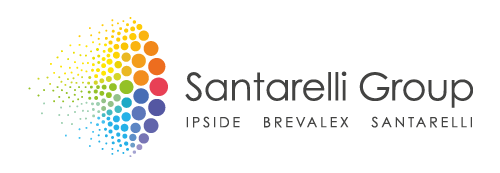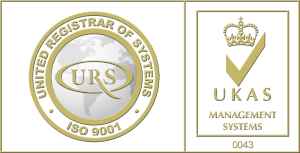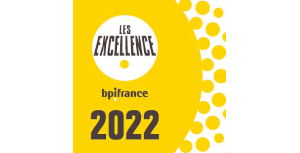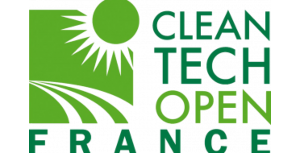In its decision of July 2, 2025 (G1/23), the Enlarged Board of Appeal ruled on a fundamental issue in patent law: must a product placed on the market necessarily be reproducible by the skilled person in order to be considered as belonging to the prior art—and therefore relevant to assessing the patentability of an invention?
Case Background
The referral to the Enlarged Board of Appeal originated in case T0438/19 concerning European patent EP 2 626 911, involving Borealis AG (opponent) and Mitsui Chemicals (patent proprietor), relating to an encapsulation material for solar cells based on a copolymer (ethylene/α-olefin) characterized in particular by a low aluminum content and improved thermal stability, aimed at enhancing the durability and efficiency of solar modules.
Borealis argued that a product called ENGAGE® 8400, available on the market before the filing date of the patent, rendered Mitsui Chemicals’ invention lacking in inventive step.
In this case, the ENGAGE® 8400 product shared all the features of independent claim 1 of the contested patent, except for the range of aluminum content. Furthermore, this product was mentioned in a prior patent application, in which it was suggested for solar cell encapsulation, and technical documents described the process for preparing the ENGAGE® polymer, without specifically detailing the 8400 version.
In response, Mitsui Chemicals argued that ENGAGE® 8400 did not form part of the state of the art because its exact composition could not be reproduced by the skilled person without undue burden.
This line of defense was based in particular on an interpretation derived from a 1992 decision, G 1/92, in which the “requirement of reproducibility” was formulated as follows:
“The chemical composition of a product is considered to form part of the state of the art when the product as such is available to the public and can be analyzed and reproduced by the skilled person […]”
(Point 1.4 of decision G1/92, emphasis added).
A jurisprudential divergence in the interpretation of decision G 1/92
Since decision G 1/92, case law has oscillated between several lines of interpretation. Some decisions (T 206/83, T 2068/15) required that the product be both analyzable and reproducible in order to be considered as part of the state of the art. Others, however (T 952/92), considered that mere availability to the public was sufficient.
Alongside this divergence, some Boards (T 946/04, T 1666/16) considered that only the chemical composition of the product was excluded from the state of the art, while others (T 370/02, T 2045/09, T 1833/14, T 23/11) extended the exclusion to the product as a whole (including its composition or internal structure) if its technical features were not accessible.
Faced with these divergences and this legal uncertainty, the Enlarged Board was referred to answer, in particular, the following questions:
- Is a product put on the market before the date of filing of a European patent application to be excluded from the state of the art within the meaning of Article 54(2) EPC for the sole reason that its composition or internal structure could not be analysed and reproduced without undue burden by the skilled person before that date?
- Is technical information about said product which was made available to the public before the filing date (e.g. by publication of technical brochure, non-patent or patent literature) state of the art within the meaning of Article 54(2) EPC, irrespective of whether the composition or internal structure of the product could be analysed and reproduced without undue burden by the skilled person before that date?
The Position of the Enlarged Board
On question 1, the Enlarged Board of Appeal ruled: the mere placing on the market of a product, even if it is not reproducible, is sufficient to include it in the state of the art, provided it is accessible to the public. The same applies to technical information concerning the product, made accessible before the filing date, regardless of whether the skilled person could analyze or reproduce its composition or internal structure (Question 2).
With this decision, the Enlarged Board puts an end to restrictive readings of G 1/92, clarifying that it does not condition prior art status on the reproducibility of the product.
Decision G 1/92 remains applicable, but must be interpreted as relating to the technical teaching that can be derived from a marketed product, and not as establishing a requirement of reproducibility for a product to be considered prior art.
The Question of “Undue Burden”
The Enlarged Board deliberately refrains from ruling on whether an analysis requiring an undue burden would exclude certain properties of the product from the state of the art. It considers that this question was not decisive for the resolution of the case and leaves it open (Point 2.5.1).
Public accessibility vs. effective proof: A gap to anticipate
In its G1/23 decision, the Enlarged Board clarified that a non-reproducible product is part of the state of the art as long as it has been made publicly accessible, including temporarily. Its subsequent withdrawal from the market or modification does not affect this status, although it may complicate the establishment of proof (Point 2.6.1). These difficulties are a matter of factual evidence and do not affect the legal qualification of public disclosure.
Practical consequences: anticipating and preventing prior art risks
Decision G 1/23 has significant implications for applicants. It clearly establishes that a product placed on the market without restriction (in particular, without confidentiality measures) becomes immediately accessible to the public and therefore constitutes state of the art, potentially destroying the novelty or inventive step of a patent application or granted patent.
This means that a competitor, third party, or even an examiner may cite a product marketed before the filing date of a patent application.
In practice, it is therefore crucial to:
- File before any commercialization, including for complex products such as those in the fields of chemistry, materials, or biotechnology.
- Control disclosures prior to filing (e.g. samples, brochures handed out at trade fairs, tests), using confidentiality agreements to avoid any public disclosure before filing.
- Take into account competitor products as potential sources of prior art when preparing a filing.













